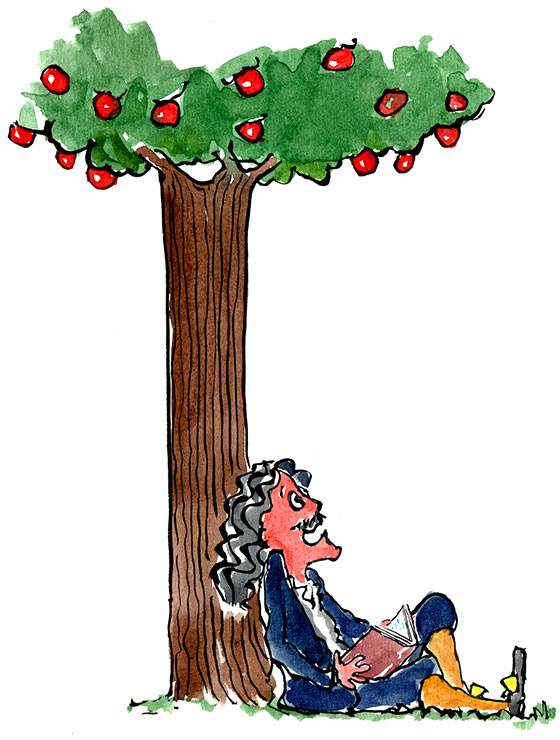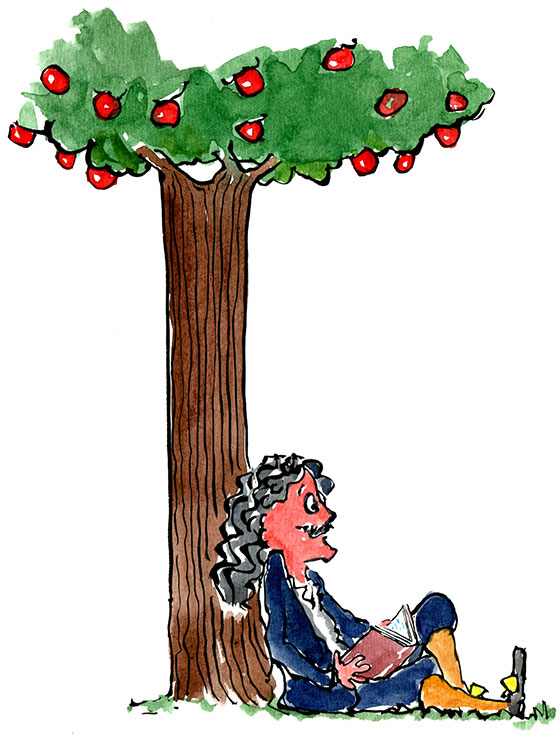Circles and PiNewton
A few decades later,
Gravity is what makes everything fall to the ground and gravity is also what makes the planets move around the sun. It is only the great speed at which planets move, that prevents them from falling directly into the sun.


Using Newton’s laws, you can derive the path that objects take when moving under the force of gravity. It turns out that planets move on ellipses, but other objects like comets can travel on
According to legend, a falling apple inspired Newton to think about gravity. He was one of the most influential scientists of all time, and his ideas shaped our understanding of the world for nearly 300 years – until Albert Einstein discovered relativity in 1905.